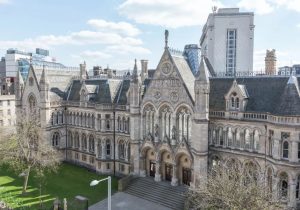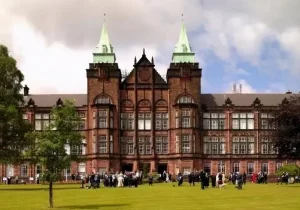
Oberlin College, Oberlin College diploma. founded in 1833 and located in a quiet town 35 miles southwest of Cleveland, Ohio, is one of the best liberal arts colleges in the United States and a member of the Great Lakes College Alliance and the Ohio Five College Alliance. Oberlin College (OC), fake Oberlin College diploma. known in Chinese as Oberlin College or Oberlin College, is a top private liberal arts college in the United States. buy fake degree of Oberlin College. Oberlin College, located in Ohio, is the first institution of higher learning in the United States to implement equal education for blacks and women, Oberlin College fake degree. so that both have the same college education opportunities and the right to obtain college degrees as white men, and is also a pioneer of liberalism.
In 1983, the New York Times reported, “In its century and a half, while Harvard worried about the classics and Yale about God, Oberlin worried about the state of America and the world beyond (translation: In Oberlin’s century and a half of history, while Harvard worried about the classics and Yale worried about God, Oberlin worried about the state of America and the whole world above it.
Oberlin Conservatory of Music is the oldest continuously operating conservatory in the United States. Oberlin is also the only university with a strong combination of top music and top liberal arts colleges. It performs more than 500 concerts a year, and its symphony orchestra is renowned throughout the United States. There are more than 230 Steinway grand pianos on campus.
OC’s motto is “Learning and Labor”, which embodies OC’s flexible education that combines learning with reality. Oberlin used the slogan “Think one person can change the world? So do we!” Believe that one person can change the world? So are we!) . Oberlin’s current slogan is “We are Oberlin, fearless”.
The school colors are cardinal red and mikado yellow. The school belongs to The Great Lakes College Association, and is a member of the Ohio Five School Alliance (including Denison University, Kenyon College, etc.), and enjoys a wealth of library resources.
Oberlin College and the town of Oberlin were both founded in 1833 by Presbyterian John Shipherd and Philo Stewart. The two men became friends in Elyria, Ohio, in the summer of 1833, and decided to establish a religiously based university and settlement in the Western United States. Together with about 40 people, the town and college were established on about 500 acres of donated land. In the spring of 1833, the first settler, Peter Pindar Pease, built his wooden house in the center of Oberlin. That December, 29 men and 15 women began classes as Oberlin College’s first students.
Historians have called Oberlin the starting point of the Civil War because it was a “hotbed” of “abolitionism.” Oberlin had helped Southern slaves escape North during the Civil War in 1844. In 1858, a group of Oberlin and Wellington residents rescued a runaway slave, John Price, from the U.S. Sheriff and took him to Canada. The Liberator was imprisoned in Cleveland for violating the Fugitive Slave Act and participating in the rescue, but was eventually released. The case has attracted national attention. Years later, the Oberlin-Wellington Rescue is credited with triggering the American Civil War.
Since its founding, Oberlin College has pursued equality and freedom.
Oberlin was also the first college in the United States to have co-ed housing. Although the history of Oberlin is not as long as that of European schools, it has created one first after another in the history of the United States.
Among Oberlin’s first graduates were women and blacks. Oberlin has been coeducational since its founding in 1833. After abolitionist regent the Rev. John Keep voted to allow admission, the college began admitting black students on a regular basis in 1835.
It was not until 1837 that women were allowed to enter a bachelor’s degree program leading to a bachelor’s degree. Before that, they received diplomas from the so-called women’s program. The college admitted its first women in 1837: Caroline Mary Rudd, Elizabeth Prall, Mary Hosford, and Mary Fletcher Kellogg, although Kellogg did not complete her degree with the others in 1841.
In 1844, Oberlin’s first black student, George B.Vashon, received a bachelor’s degree. He went on to become one of the founders of Howard University and the first black lawyer admitted to a New York state court. Mary Jane Patterson received her Bachelor of Education degree in 1862, becoming the first black woman to receive a degree from an American university.
The college struggled financially in its early years. Shipherd made several fundraising trips to the east, while directors John Keep and William Dawes travelled to England to secure financial support. Keep and Dawes raised money primarily from the abolitionist community. Eighteen months later, they brought home $30,000 in gold, equivalent to $640 million in today’s terms.
In 1850, Oberlin Collegiate Institute was renamed Oberlin College. The name reflects a gradual shift in curriculum and educational focus, from preparatory, manual labor, and theological courses to formal instruction and courses in subjects such as classics, science, fine arts, and music.
In 1867, two years after its founding as a private school, the Oberlin School of Music became part of Oberlin College.














